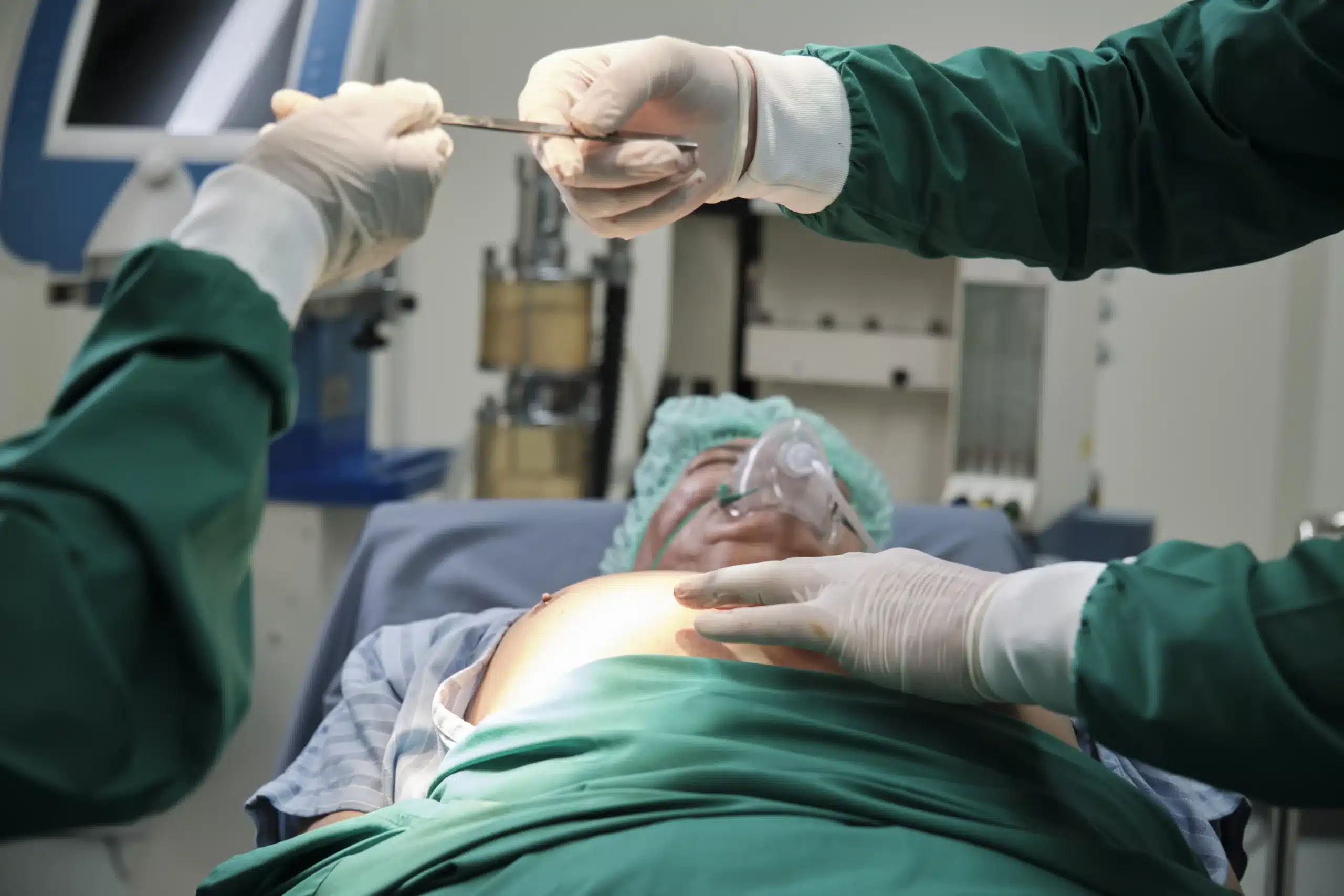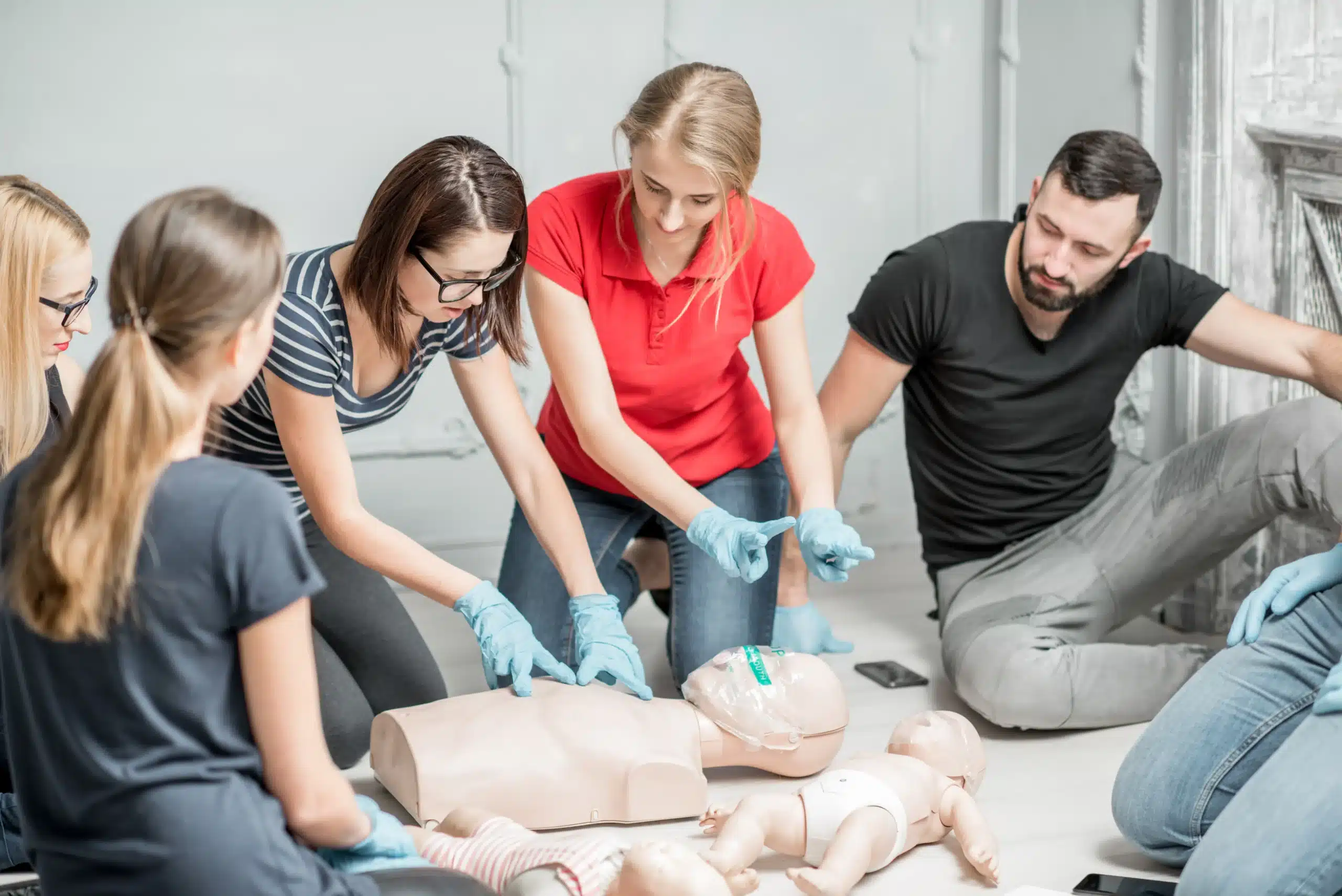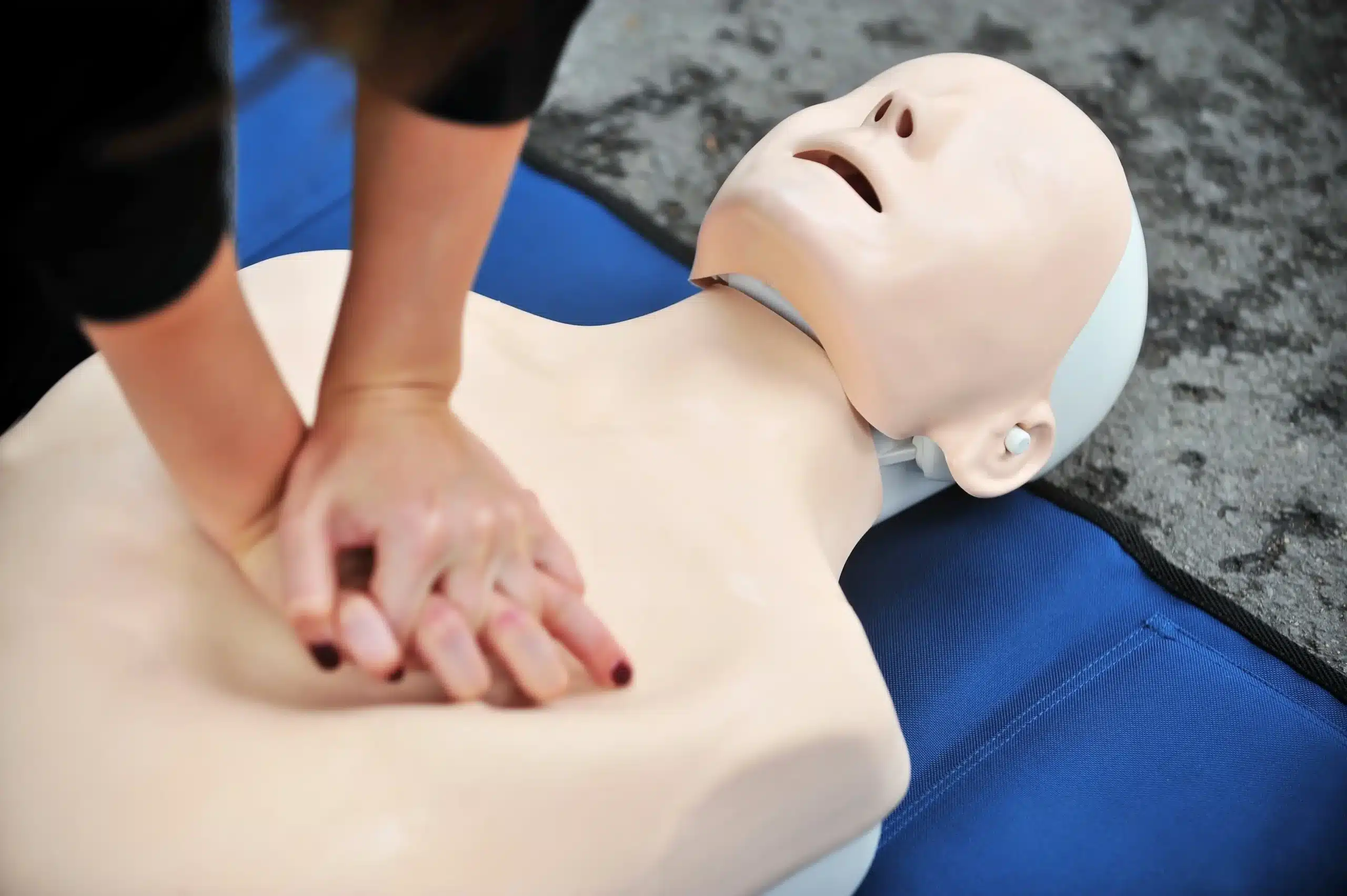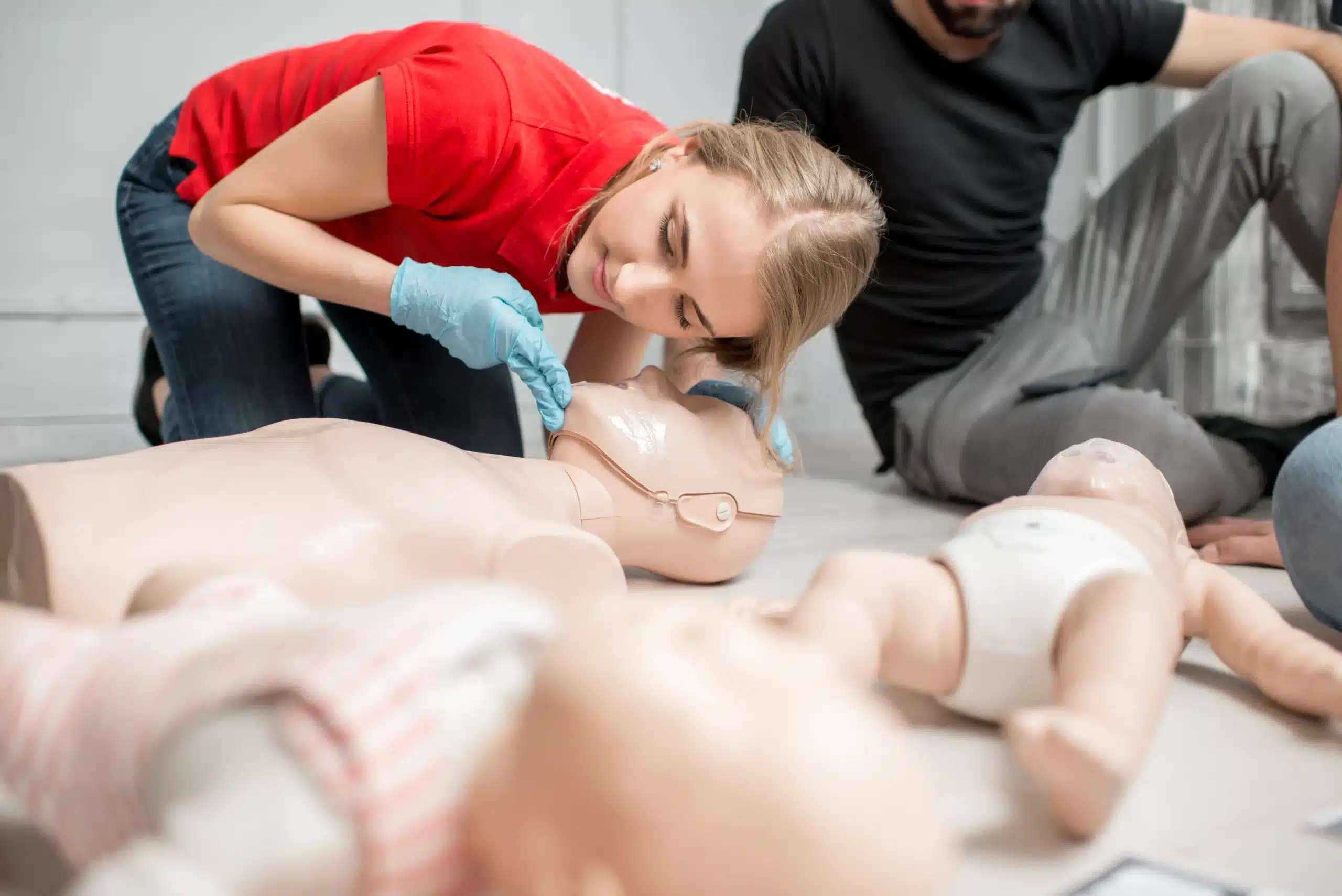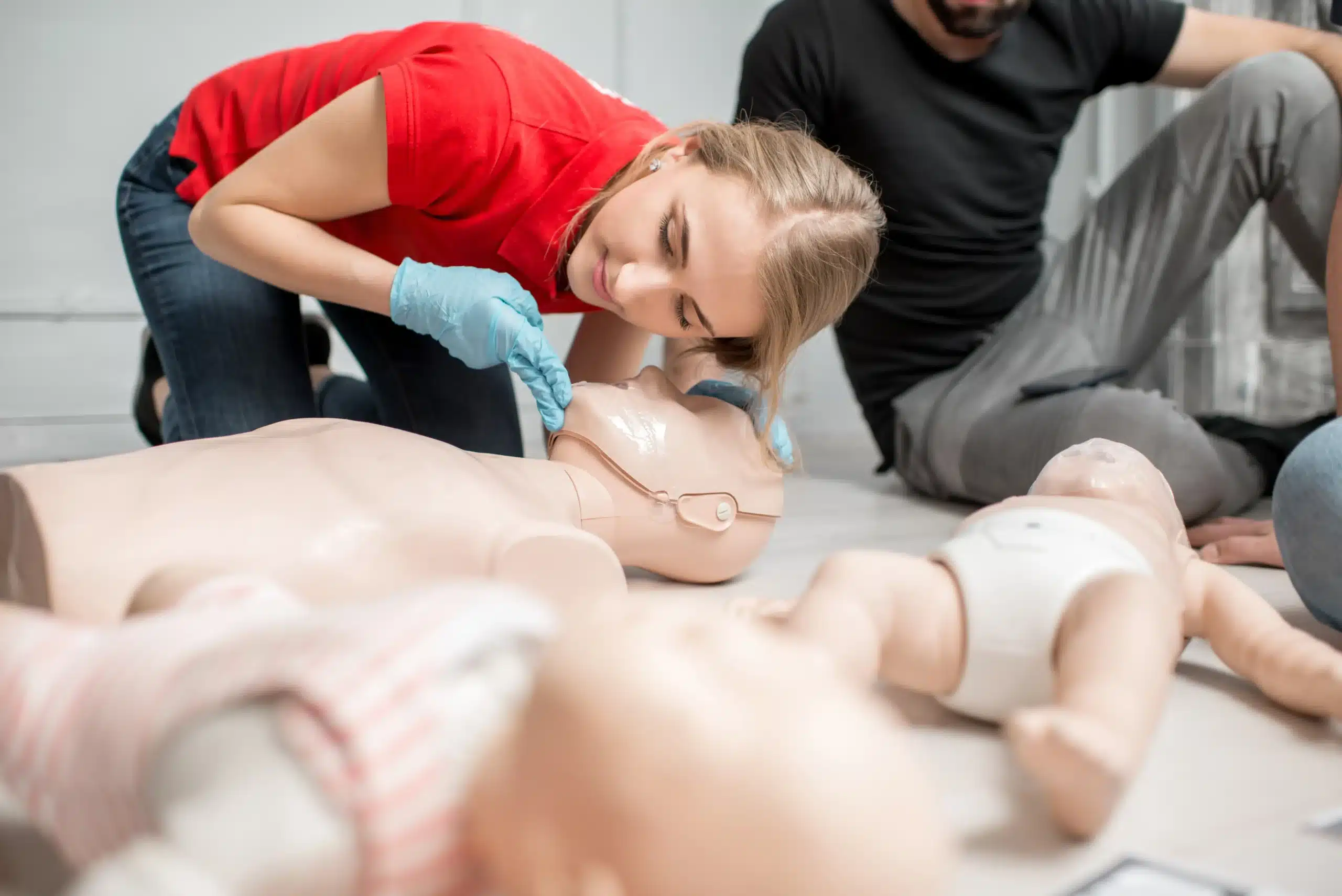Emergencies happen, and knowing how to respond can make all the difference. Basic Life Support (BLS) training equips you with the skills to act quickly and confidently in a crisis. This comprehensive guide covers everything you need to know about BLS, from the core skills to finding bls training nearby. We’ll explore the various training formats available, how to choose a reputable provider, what to expect during a BLS course, and the importance of keeping your certification current. Whether you’re a healthcare provider, a concerned parent, or simply someone who wants to be prepared, this guide will help you understand the value of BLS and find the right training program for you.
Key Takeaways
- BLS training is for everyone: From healthcare professionals to everyday people, BLS skills empower you to respond effectively to medical emergencies. Find a course that fits your schedule and budget.
- Choose a course that works for you: Whether you learn best in person or online, select a BLS course that matches your learning style and offers ample hands-on practice.
- Stay current with your skills: Maintain your BLS certification by renewing it every two years. Regular practice and continuing education ensure you’re always prepared to help in a crisis.
What is BLS Training?
Basic Life Support (BLS) training gives you the skills to respond to medical emergencies. It covers core techniques like CPR (cardiopulmonary resuscitation), using an AED (automated external defibrillator), and relieving choking. These skills are essential for healthcare providers and anyone who wants to help in a crisis. BLS certification often involves hands-on practice and a written test, so you’ll feel confident and prepared to act quickly when needed. It’s about more than just checking a box; it’s about equipping yourself to potentially save a life. For healthcare professionals, BLS certification is often a job requirement, demonstrating a commitment to patient safety. But even outside of healthcare settings, BLS training can empower you to make a difference in your community. Think of parents, teachers, coaches, or anyone who interacts with people regularly—BLS training can turn bystanders into first responders.
Why BLS Training Matters
Basic Life Support (BLS) training is essential for anyone who might need to help during a medical emergency. BLS certification covers core skills like CPR, using an AED, and basic airway management. These skills empower you to respond quickly and effectively, potentially improving outcomes in life-threatening situations. A 2020 study highlighted how BLS training prepares individuals for real-world emergencies, directly impacting survival rates and patient outcomes (research on BLS training).
While often associated with healthcare professionals, BLS training benefits everyone. It equips individuals to handle various emergencies, from assisting someone who is choking to using an AED. Consider BLS training an investment in yourself and the well-being of those around you. It’s a valuable asset in any situation where quick, decisive action can make all the difference. Becoming BLS certified gives you the confidence and skills to make a real difference and contribute to a safer community. You can learn more about common misconceptions surrounding BLS training and its importance for everyone (common misconceptions about BLS).
Find BLS Training Near You
Finding the right BLS course involves several key factors. Think about cost, schedule flexibility, instructor experience, and the training provider’s reputation when making your decision. Here are some common places to find BLS training:
Local Hospitals and Medical Centers
Many hospitals and medical centers offer BLS certification courses to their staff and the wider community. Check with your local hospitals to see what’s available. These courses are often taught by experienced medical professionals, providing valuable real-world insights. However, they can sometimes be more expensive than other options.
Community Colleges
Community colleges frequently offer BLS training as part of their continuing education programs. These courses are generally affordable and accessible, making them a good option for those on a budget. Keep in mind that class schedules may be less flexible than private providers.
American Red Cross
The American Red Cross offers a variety of BLS courses, including online and in-person options. They are a well-established and reputable organization, and their BLS certification is widely recognized. However, the Red Cross follows its own curriculum, which may not perfectly align with the American Heart Association guidelines preferred by some healthcare employers.
American Heart Association
The American Heart Association (AHA) is a leading provider of BLS training. AHA BLS certification is highly regarded in the medical field and is often a requirement for healthcare professionals. The AHA requires a hands-on skills assessment in addition to any online coursework, so be prepared for an in-person component. You can find more information about their courses on their website.
Safety Training Seminars
Safety Training Seminars offers a range of AHA-compliant BLS courses in Santa Rosa, Rohnert Park, and Windsor, CA. We focus on providing convenient, high-quality training at competitive prices. Check out our BLS course options to find a class that fits your schedule and budget. We also offer a low price guarantee, so you can be confident you’re getting the best value for your training. For those looking for other options like RQI, we offer those classes as well. We also offer discounts for group classes.
Types of BLS Training Formats
BLS training comes in a few different formats, so you can choose what works best for your schedule and learning style. Let’s take a look at the most common options: in-person, online, and blended learning.
In-Person Training
In-person BLS training gives you hands-on practice and direct interaction with an instructor. These courses typically take place in a classroom setting and last about four and a half hours. You’ll work with training equipment and get real-time feedback, which can be especially helpful for mastering skills like chest compressions and rescue breaths. This format is a great option for people who thrive in a traditional classroom environment and value face-to-face instruction. If you prefer asking questions directly and learning alongside others, in-person training might be the best choice for you. Safety Training Seminars offers in-person BLS training in Santa Rosa, CA.
Online Training
If you need a more flexible option, online BLS training might be a good fit. You can work through the material at your own pace using your computer, tablet, or smartphone. Online courses often include interactive modules and assessments that adapt to your skill level. This format is perfect for busy schedules or those who prefer self-directed learning. Keep in mind that online-only
Blended Learning
Blended learning combines the convenience of online learning with the benefits of in-person instruction. You’ll complete the coursework online at your own speed, then attend a shorter in-person skills session with an instructor. This approach lets you absorb the information independently and then focus on practicing your skills under expert guidance. Blended learning offers a good balance of flexibility and hands-on training, making it a popular choice for many students. It’s a great way to fit BLS training into a busy schedule while still getting personalized feedback and demonstrating your skills.
Choose the Right BLS Provider
Finding the right BLS training provider is crucial for a valuable learning experience. Here’s what to consider when making your decision:
Accreditation and Certification
Look for training centers certified by reputable organizations like the American Heart Association (AHA). This ensures the BLS training adheres to the latest Emergency Cardiovascular Care (ECC) guidelines and uses a standardized, evidence-based curriculum. AHA certification is widely recognized and often preferred by employers.
Course Content and Duration
BLS certification courses cover essential skills like CPR, AED use, and airway management. Confirm the course includes all the core components and aligns with your specific needs. Most BLS courses run between four and six hours, allowing you to compare schedules and choose a format that fits your availability. Check out Safety Training Seminars’ group discounts for cost-effective options.
Instructor Qualifications
Experienced, certified instructors make a big difference. Instructors certified by organizations like the AHA bring in-depth knowledge and practical expertise to the classroom. Ask about the instructors’ credentials and experience to ensure you’re learning from qualified professionals.
Hands-on Practice
Effective BLS training involves significant hands-on practice. This gives you the chance to apply your skills in a safe environment and build confidence for real-world emergencies. Check if the course includes practice sessions on mannequins and with AED trainers. Safety Training Seminars emphasizes hands-on learning to prepare you for real-life scenarios.
Cost and Discounts
BLS course fees can vary. While cost is a factor, prioritize the quality of the training. Look for providers offering competitive pricing without compromising on the curriculum or instructor experience. Safety Training Seminars offers a low-price guarantee, ensuring you receive top-tier training at a competitive rate.
What to Expect in a BLS Course
So, you’ve decided to get BLS certified—great choice! Knowing what to expect can help you feel prepared and confident going into your training. This section covers the core skills you’ll learn and how you’ll be assessed.
Core Skills
BLS certification covers core skills for responding to life-threatening emergencies. You’ll learn adult, child, and infant CPR, how to use an automated external defibrillator (AED), and basic airway management techniques. The course also covers relieving choking and rescue breathing. High-quality BLS training emphasizes teamwork and communication, so expect to participate in scenarios and simulations. These hands-on activities will help you develop the muscle memory and critical thinking skills to respond effectively in real-life situations.
Assessment Methods
BLS courses typically involve two types of assessments: a written exam and a skills test. The written exam usually consists of multiple-choice questions covering the course material. The skills test requires you to demonstrate your proficiency in the practical skills you’ve learned, like CPR and AED use. Your instructor will observe your technique and provide feedback. Don’t worry if you don’t get it perfect on the first try—your instructor will guide you. Once you’ve successfully passed both the written and skills components, you’ll receive your BLS CPR certification. This certification demonstrates your competence in providing basic life support.
BLS Certification and Renewal
Keeping your BLS certification current is essential for any healthcare provider. Knowing you have the most up-to-date skills can give you confidence in an emergency. This section covers everything you need to know about BLS certification and renewal.
Certification Validity
BLS certification is typically valid for two years. After this period, you’ll need to renew your certification to stay current with the latest guidelines from organizations like the American Heart Association. This ensures you’re always prepared to provide effective, high-quality basic life support. Check with your certifying organization to confirm the exact duration of your BLS certification. For example, the American Heart Association provides detailed information on their BLS certification process.
Renewal Options
Don’t let your skills lapse! Renewal courses are readily available for those whose certifications are nearing expiration. These courses offer a refresher on essential techniques and introduce any updated guidelines, allowing you to maintain your skills and knowledge and respond effectively in critical situations. Many providers offer convenient renewal options, including in-person classes and online courses, so you can choose the format that best fits your schedule. Safety Training Seminars offers a variety of courses, including BLS renewal, often with group discounts. Check their website for available renewal courses in your area.
Common BLS Misconceptions
There are a few common misconceptions about BLS training and certification. Let’s clear those up.
One myth is that BLS certification is only for healthcare professionals. The truth is that BLS training is a valuable skill for anyone. From medical professionals to teachers, coaches, and parents, knowing BLS can empower you to help in a medical emergency. In fact, having more people in a community trained in BLS can improve outcomes during emergencies. You can find more information on the importance of BLS training at Medtigo. Another misconception is that getting BLS certified takes a lot of time. While some healthcare providers require more comprehensive training, there are plenty of BLS courses designed to fit busy schedules. Many providers offer options that can be completed quickly, making them accessible to even the busiest individuals.
Some people also think BLS training is just CPR. CPR is definitely a core part of BLS, but it also includes other life-saving techniques like using an AED and basic airway management. These additional skills can be crucial in various emergency situations. For a clearer understanding of what BLS training includes, visit Medtigo. Finally, there’s sometimes concern about the credibility of online BLS certification. Many reputable organizations offer high-quality online BLS courses that meet the same standards as in-person training. These courses often provide flexibility and convenience. If you’re considering online BLS certification, American Health Training discusses the credibility of online training options. And remember, BLS certification does require renewal every two years, so plan to refresh your skills and knowledge regularly.
Prepare for Your BLS Training
Getting ready for your BLS training involves a few key steps. Understanding what to expect and how to choose the right course makes a big difference in your learning experience. Here’s a breakdown to help you feel confident and prepared:
First, familiarize yourself with the course content. BLS certification covers essential skills like CPR, using an AED, and basic airway management. These skills are the foundation of emergency response, and you’ll learn how to apply them effectively. A good BLS course also covers recognizing life-threatening emergencies, providing high-quality chest compressions, delivering appropriate ventilations, and working as a team during resuscitation. My CPR Certification Online offers more insights into best practices for BLS education and training.
Next, consider your options for BLS courses. Think about factors like cost, schedule flexibility, the instructor’s experience, and the training provider’s reputation. Rocklin CPR Classes offers helpful tips on choosing a course that fits your needs. For example, if you have a busy schedule, an online BLS course might be a good fit. Online training offers convenience and can be more affordable, as you won’t need to travel to a physical location.
Speaking of cost, BLS certification prices can vary. They typically range from $30 to $150 per person, depending on the provider, location, and type of certification. GB Times provides a helpful overview of cost considerations. It’s a good idea to factor this into your budget as you’re comparing courses. If cost is a concern, check if your employer offers reimbursement or if there are any available discounts, such as those for group classes at Safety Training Seminars. We offer a low price guarantee, so you can feel confident you’re getting a competitive rate. We also offer several courses, including BLS and ACLS certifications through the American Heart Association. You can also explore our RQI classes. Check out our website for more information on group discounts, our low price guarantee, BLS, ACLS, and RQI courses.
Make the Most of Your BLS Training
So, you’ve decided to get your BLS certification—that’s fantastic! BLS training equips you with crucial skills to respond effectively in medical emergencies. It’s more than just a certificate; it’s about confidently providing aid when it matters most. Here’s how to truly maximize your training experience:
First, understand the importance of BLS skills. Your training will cover essential life-saving techniques like CPR, using an AED, and basic airway management. These skills are the foundation of emergency care, giving you the power to make a real difference. A solid understanding of these principles is crucial for healthcare providers, and it can also be invaluable in your personal life. Knowing you can handle these situations can bring a sense of calm and preparedness to your everyday life.
Next, choose the right BLS course for your needs. Consider factors like cost, schedule flexibility, the instructor’s experience, and the training provider’s reputation. Safety Training Seminars offers a range of options to fit your schedule and budget. Look for a course that offers plenty of hands-on practice, as this is key to mastering the techniques. A good instructor will create a supportive learning environment where you feel comfortable asking questions and practicing your skills. Check out this guide for BLS courses for more tips on choosing the right class.
Finally, remember that BLS certification isn’t just a one-time thing. Stay up-to-date with the latest guidelines and best practices by renewing your certification regularly. This ensures your skills remain sharp and you’re always ready to respond effectively. Consider adding RQI to your training to maintain your skills between renewals. This ongoing commitment to your training will not only benefit those you help but also boost your confidence in your abilities. You’ll be prepared to handle emergencies with the most current knowledge and techniques.
Related Articles
- BLS Training Near Me: Find the Right Course for You – Santa Rosa CPR Classes
- BLS Certification Near Me: Your Complete Guide – Santa Rosa CPR Classes
- BLS Classes Near Me: A Comprehensive Guide – Santa Rosa CPR Classes
- BLS Renewal Near Me: How to Choose & What to Expect – Santa Rosa CPR Classes
- Debunking Common CPR Myths: Everyone Should Know This
Frequently Asked Questions
Is BLS certification only for healthcare professionals? Not at all! While often a job requirement in healthcare, BLS training benefits anyone who wants to be prepared for a medical emergency. Parents, teachers, coaches, and anyone interacting with the public can use these skills. It’s about empowering yourself to help when it matters most.
What if I’m not comfortable performing CPR on a stranger? It’s understandable to feel hesitant. BLS training builds confidence through hands-on practice and guidance from experienced instructors. You’ll learn in a safe environment, developing the muscle memory and decision-making skills to act quickly and effectively in real situations.
How long does BLS certification last, and how do I renew it? BLS certification is typically valid for two years. Renewal courses are readily available, often offered in various formats like in-person classes and online modules. Check with your certifying organization or training provider for specific renewal options.
What’s the difference between online and in-person BLS training? Online BLS training offers flexibility, allowing you to learn at your own pace. However, most online courses require an in-person skills session for certification. In-person training provides direct interaction with an instructor and hands-on practice with equipment. Consider your learning style and schedule when choosing a format.
How can I find a reputable BLS training provider near me? Look for providers accredited by recognized organizations like the American Heart Association. Consider factors like instructor qualifications, course content, hands-on practice opportunities, and cost. Reading reviews and comparing options can help you find the best fit for your needs. Safety Training Seminars offers various BLS courses in Santa Rosa, Rohnert Park, and Windsor, CA, with a focus on convenience and affordability.
